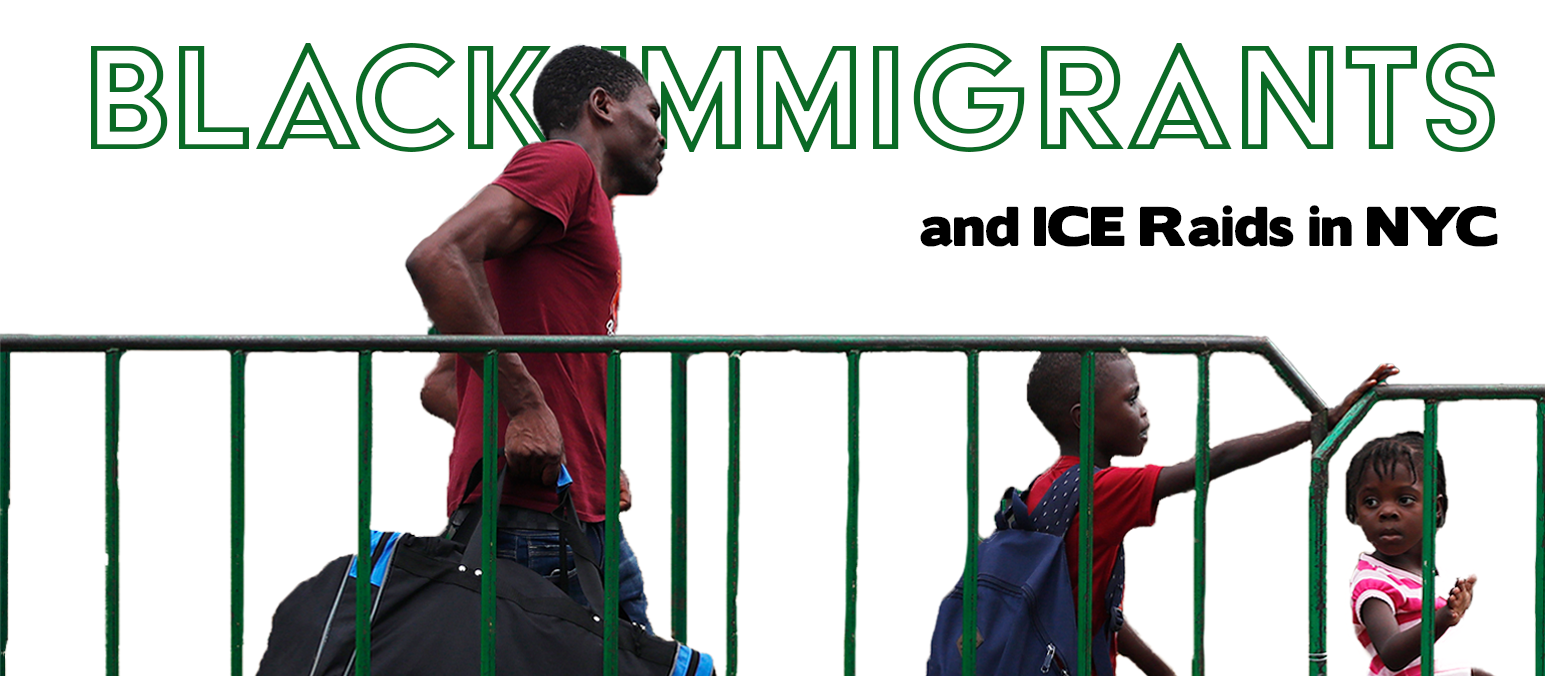
On July 12, President Donald Trump promised that there would be raids in cities around the country, including New York City, to detain and deport immigrants with criminal backgrounds. However advocates contended that ICE raids would mostly harm families, especially those who came to America recently. Since the announcement, U.S. Immigration and Customs Enforcement officers have carried out several unsuccessful attempts to arrest individuals. Like accross the country, undocumented individuals in the Big Apple, including those of African and Caribbean decent, have felt more fear over their well-being than ever since Trump was elected in 2016.
New York City has one of the largest Black immigrant populations in the country. At least one-third of Black New Yorkers were born in another country and most are from the Carribbean, according to a 2014 New York Times report. Carribbean New Yorkers have settled in enclaves throughout the boroughs, such as Flatbush, Brooklyn, Jamaica, Queens, and throughout the South Bronx. The population of African immigrants in New York City has doubled each decade since 1980, the report also stated. Many have settled in Little Senegal in Harlem, Concourse Village in the Bronx where many Ghanains live, and throughout Brooklyn and Queens as well.
Historically, many of these areas have been targeted by ICE raids, according to ICEwatch, an interactive map produced by the Immigrant Defense Project and the Center for Constitutional Rights. The data documents ICE activity in New York from December 2008 to June 2019. Even though New York City is a sanctuary city, where officials and government agencies openly welcome and support immigrants with legal and social services, ICE still has the power to arrest individuals either way.
In the 1,077 reported raids, ICE officers in New York City targeted immigrants at homes, courthouses, on the street, at shelters, workplaces and during traffic stops. ICE uses tactics such as surveillance, warrantless entry, ruse, collateral arrests and use of force to detain individuals. The map shows that ICE has increasingly targeted individuals at the Bronx County criminal court, Kings County Criminal court, Queens County courts and have run home raids throughout residential neighborhoods in Brooklyn, Queens and the Bronx.
The weekend after Trump announced the raid, information spread throughout social media about attempted ICE raids in East Harlem, which is 33 percent Black and 45 percent Hispanic, and Sunset Park. “Receiving reports of attempted but reportedly unsuccessful ICE enforcement actions in Sunset Park and Harlem,” tweeted Mayor Bill DeBlasio on July 13.
The mayor responded by sharing a link to a “Know Your Rights” video guide, a resource from the Office of the New York City Immigrant Affairs informing affected groups what they should do if they’re stopped and detained by ICE. That weekend, the New Sanctuary Coalition, a network of New York City-based religious institutions, also opened its doors to anyone seeking a safe space. On social media there was speculation that ICE were raiding the subway, but that was not confirmed by officials.
By Tuesday, July 17, there were more attempted raids in Midwood, where the population of Black residents is 30 percent, and Sunset Park areas of Brooklyn, and in Far Rockaway, Queens, where Black residents make up 44 percent of the population. On Tuesday Aug. 6, ICE reportedly attempted to raid a homeless shelter in East New York, Brooklyn without warrants.
While Trump has stirred chaos with ICE raids, he is simutaneously creating new obstacles for undocumented immigrants seeking citizenship. He revealed on Monday that it will be harder for green card and visa applicants to apply for documentation if they’ve used services such as Medicaid, public housing or food stamps in the past. This new policy will also have a huge impact on at least 1.8 million black immigrants and their families, according to the Black Alliance for Just Immigration (BAJI), an organization supporting black immigrants in the U.S.
“Black immigrants and refugees already face extremely high poverty, unemployment, and deportation rate,” said Nana Gyamfi, Executive Director of the Black Alliance for Just Immigration, in a news release on Monday.
For those who want more context on understanding the circumstances black migrants are facing nationwide, The Black Alliance for Just Immigration released an alarming report in 2018, detailing that at least 4,000 Haitians were detained or deported at the U.S. southern border in 2016 and at least 3,000 were denied entry. African refugees are increasingly seeking entry at the southern border too.
The report states that one of that a “holistic approach” is necessary to aid the situation for black migrants at the border. The organization named funding toward transition services for newly arrived black migrants and the need for culturally competent attorneys who speak Creole and African languages, as some solutions to the ongoing issue.




